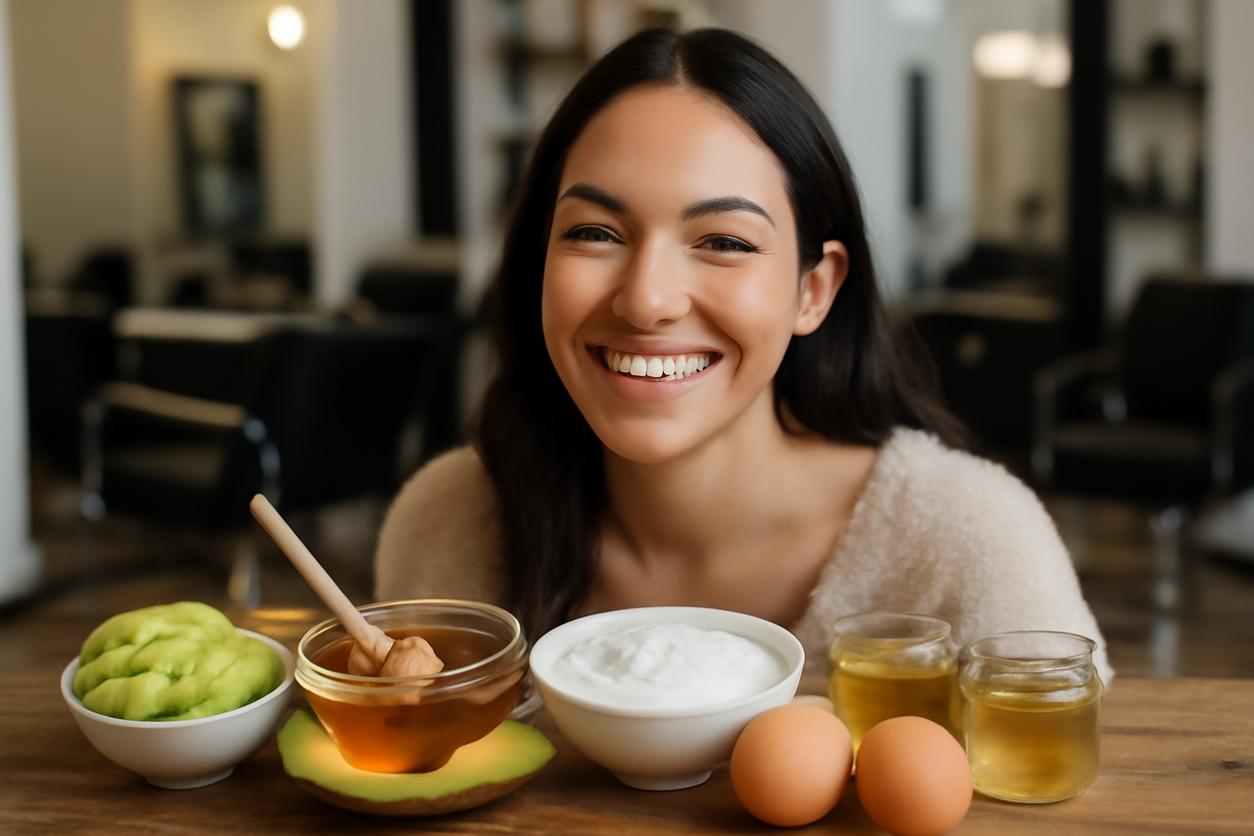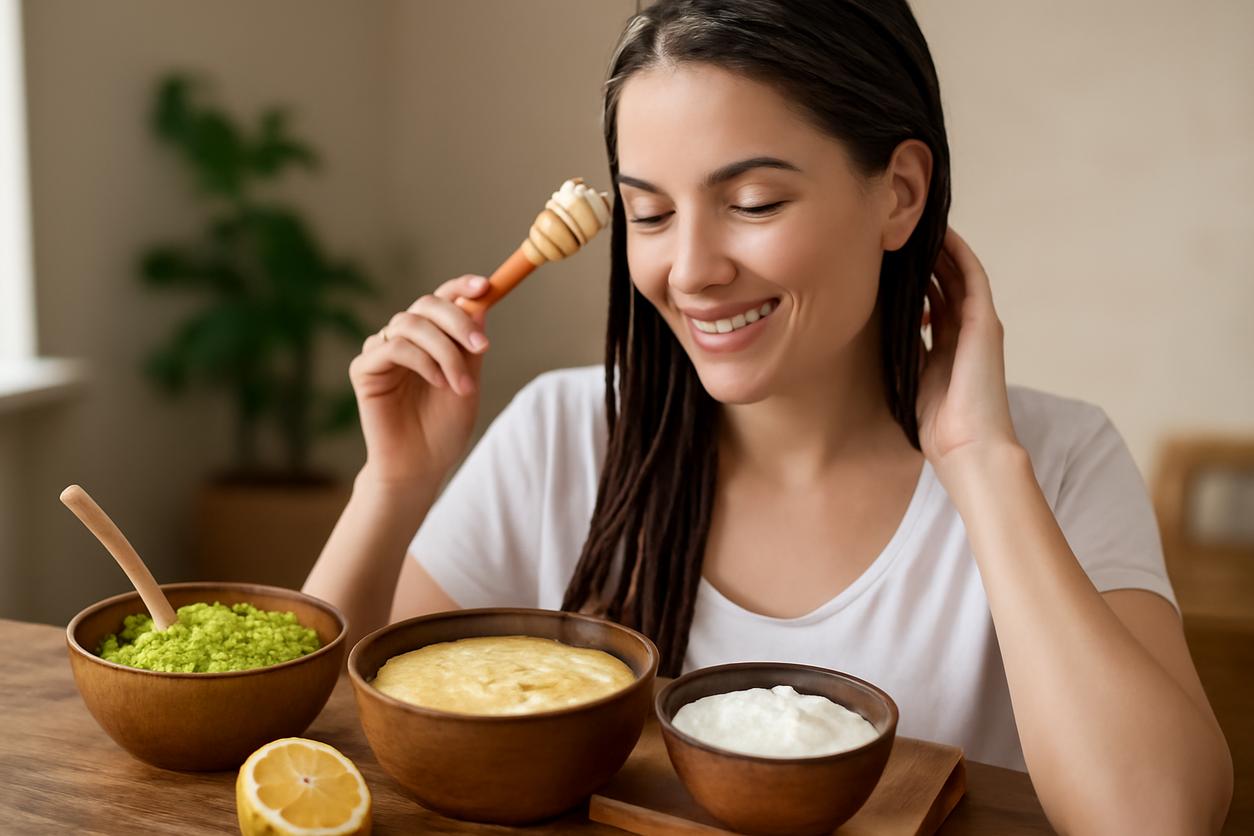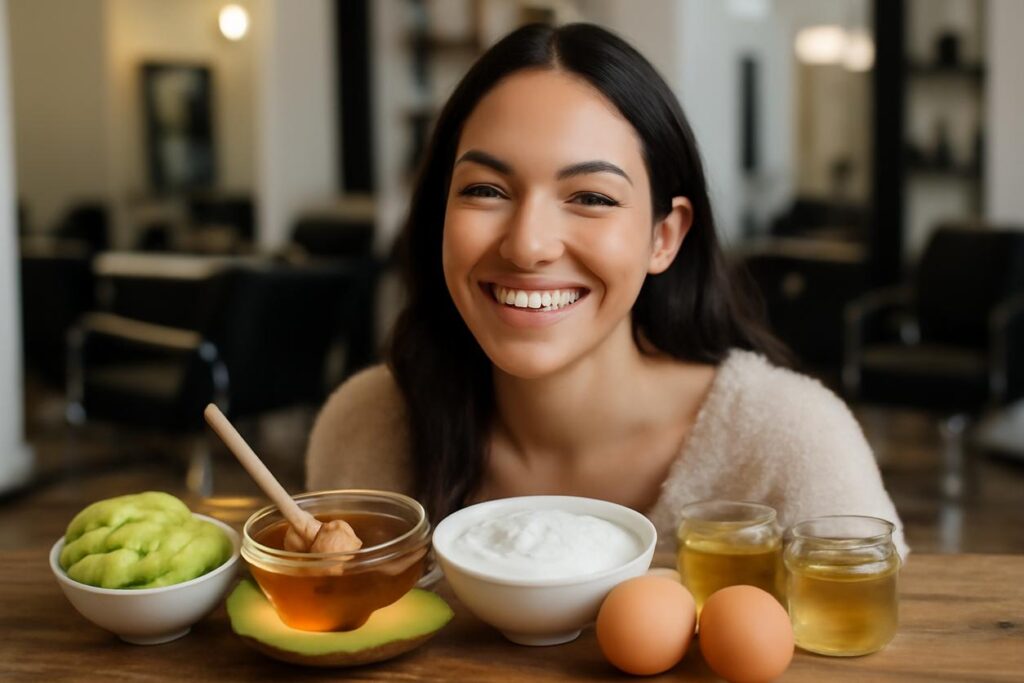Table of Contents
- Why Curls Need Tailored Care
- Identify Your Curl Pattern and Porosity
- Core Principles: Moisture, Protein, and Balance
- Daily and Weekly Routines by Curl Type
- Styling Without Damage: Tools and Techniques That Protect Shape
- Nighttime and Travel Routines to Preserve Curls
- Nutrition for Healthy Hair: Foods and Vitamins That Support Curls
- How to Choose Products: Ingredient Signals and a Decision Checklist
- Common Pitfalls and How to Fix Them Quickly
- Quick Styling Ideas for Busy Mornings
- FAQ: Troubleshooting Frizz, Shrinkage, and Longevity of Styles
- Conclusion: Building a Sustainable Curl Care Habit
Why Curls Need Tailored Care
Welcome to your ultimate guide of curly hair tips for 2025 and beyond. If you have curly hair, you already know it has a mind of its own. Unlike straight hair, the twists and turns of each curl create a unique structure that requires a special approach. The natural oils produced by your scalp have a harder time traveling down the coiled hair shaft, which is why curls are often prone to dryness, frizz, and breakage. Understanding this fundamental difference is the first step toward unlocking the full potential of your hair.
Generic hair advice often falls short because it doesn’t account for the specific needs of different textures. This guide provides practical, science-backed curly hair tips tailored to your unique hair type. By learning about your curl pattern, porosity, and the delicate balance of moisture and protein, you can move from fighting your hair to celebrating it. Get ready to build a simple, effective routine that results in healthy, defined, and vibrant curls.
Identify Your Curl Pattern and Porosity
Before you can find the right routine, you need to understand what you’re working with. Two key factors determine how your hair behaves: its curl pattern and its porosity.
Curl Pattern refers to the shape and size of your curls. While most people have a mix of patterns, identifying your dominant type helps you choose appropriate styling techniques and products. The system generally includes:
- Type 2 (Wavy): S-shaped waves that are closer to the head. They range from fine and thin (2a) to coarse and frizz-prone (2c). Waves tend to be weighed down easily by heavy products.
- Type 3 (Curly): Well-defined, springy curls that form loops. They can be loose loops (3a), tighter corkscrews (3b), or dense, S-shaped coils (3c). This type is often prone to dryness and loss of definition.
- Type 4 (Coily/Kinky): Tightly coiled, zig-zag patterns that are naturally very dry and spongy in texture. They range from S-shaped coils (4a) to Z-shaped patterns with less visible definition (4c). This hair type is the most fragile and prone to shrinkage.
Hair Porosity is your hair’s ability to absorb and retain moisture. It’s just as important as your curl pattern. You can perform a simple test: drop a clean, dry strand of hair into a glass of water.
- Low Porosity: The strand floats. Your hair cuticles are tightly packed, making it difficult for moisture to get in. Hair takes a long time to get wet and a long time to dry. It’s prone to product buildup because products tend to sit on top of the hair.
- Medium Porosity: The strand floats for a bit, then slowly sinks. This is the ideal porosity; hair absorbs and retains moisture well.
- High Porosity: The strand sinks quickly. The cuticles are raised or have gaps, so hair easily absorbs moisture but loses it just as fast. This can be genetic or caused by damage from heat or chemical treatments. Hair often feels frizzy and dry.
Core Principles: Moisture, Protein, and Balance
Healthy curly hair thrives on a delicate equilibrium between moisture and protein. Understanding their roles is one of the most crucial curly hair tips you can learn.
- Moisture: This is all about hydration. Water is the ultimate moisturizer. Ingredients like glycerin, aloe vera, and fatty alcohols (like cetyl alcohol) help hair attract and hold onto water. If your hair feels dry, brittle, and rough, it’s craving moisture.
- Protein: Proteins like keratin, collagen, and silk amino acids act as building blocks. They fill in the gaps in damaged hair cuticles, adding strength and structure. If your hair feels mushy, overly soft, and won’t hold a curl, it likely needs a protein boost.
The goal is balance. Too much moisture without enough protein can lead to limp, weak hair. Too much protein without enough moisture can make hair feel stiff and brittle. Pay attention to how your hair feels and adjust your routine accordingly. If you use a deep conditioner one week (moisture), consider a strengthening treatment the next (protein).
Daily and Weekly Routines by Curl Type
Your daily and weekly care will vary based on your curl type’s needs. Here are some sample frameworks.
Cleansing Tips: Shampooing and Co-Washing Explained
How you wash your hair sets the foundation for your style. The key is to cleanse without stripping away essential moisture.
- Shampooing: Choose a sulfate-free shampoo (often called a “low-poo”). Sulfates are harsh detergents that create a big lather but can severely dry out curly hair. Wavy types may need to shampoo 2-4 times a week, while coily types might only shampoo once a week or even less.
- Co-Washing: This means “conditioner-only washing.” You use a cleansing conditioner to gently wash your hair. It’s an excellent option for very dry, coarse, or coily hair (Types 3c-4c) that needs maximum moisture. You can alternate co-washing with a low-poo shampoo to prevent buildup.
- Clarifying: Once a month, use a clarifying shampoo to remove product buildup, especially if you have low-porosity hair or use products with silicones or heavy oils.
Hydration Methods: Leave-In Conditioners and Refresh Sprays
Hydration doesn’t stop in the shower. Curls need continuous moisture to stay defined and frizz-free.
- Leave-In Conditioner: Apply a leave-in conditioner to wet hair right after rinsing. This is a non-negotiable step for most curl types. It provides a base layer of moisture and makes styling easier.
- Layering Products: Methods like the LOC (Leave-in, Oil, Cream) or LCO (Leave-in, Cream, Oil) are popular for locking in moisture, especially for high-porosity or Type 4 hair. Experiment to see which order your hair prefers.
- Refreshing: On non-wash days, revive your curls by lightly spritzing them with a mix of water and a bit of leave-in conditioner. Gently scrunch to encourage curl formation and let it air dry.
Styling Without Damage: Tools and Techniques That Protect Shape
The right styling techniques will enhance your natural pattern without causing harm. It’s less about forcing your hair into a shape and more about encouraging what it wants to do naturally.
- Apply to Soaking Wet Hair: For best results and minimal frizz, apply your styling products (like curl cream or gel) when your hair is dripping wet. This helps clumps form and locks in water.
- Use Your Hands: Your hands are your best tools. Techniques like “praying hands” (smoothing product down the hair shaft between your palms) or “scrunching” (gently cupping and squeezing ends toward the scalp) help encourage curl clumps without creating frizz.
- The “Plop”: After applying products, you can “plop” your hair. Lay a cotton T-shirt or microfiber towel on a flat surface, flip your hair forward onto it, then wrap the fabric around your head. This absorbs excess water without disrupting your curl pattern like a traditional terrycloth towel would.
Heat Use and Protective Methods
Minimizing direct heat is one of the best curly hair tips for long-term health. When you do use heat, do it safely.
- Air-Dry When Possible: The gentlest method is to let your hair air-dry.
- Use a Diffuser: If you’re short on time, a diffuser attachment on your blow dryer is the next best thing. It disperses the airflow to reduce frizz and enhance curl definition. Always use it on the lowest heat and speed settings.
- Heat Protectant: If you ever use direct heat tools like a flat iron or curling wand (which should be a rare occasion), a high-quality heat protectant is absolutely mandatory to prevent irreversible damage to your curl pattern.
Nighttime and Travel Routines to Preserve Curls
A good nighttime routine is the secret to a multi-day hairstyle. The goal is to minimize friction and prevent your curls from getting crushed while you sleep.
- Protect Your Hair: Use a satin or silk pillowcase. These materials create less friction than cotton, which helps reduce frizz and breakage.
- The “Pineapple”: Loosely gather your hair at the very top of your head and secure it with a gentle tie like a scrunchie or coil hair tie. This protects your curls from being flattened.
- Cover Up: For extra protection, especially for Type 3 and 4 hair, wear a satin bonnet or scarf to bed.
- Travel Smart: Pack travel-sized versions of your essential products. A spray bottle for refreshing is a must-have. If you’re flying, be mindful of liquid restrictions and consider solid shampoo and conditioner bars.
Nutrition for Healthy Hair: Foods and Vitamins That Support Curls
Healthy hair starts from within. A balanced diet provides the essential nutrients your hair follicles need to grow strong, resilient hair. As noted by research available from institutions like the National Institutes of Health, specific vitamins and minerals play a key role in hair health.
- Protein: Since hair is made mostly of protein (keratin), ensure you’re getting enough from sources like lean meats, fish, eggs, beans, and lentils.
- Iron: Iron deficiency can be linked to hair loss. Find it in red meat, spinach, and fortified cereals.
- Biotin: This B-vitamin is crucial for hair production. It’s found in eggs, nuts, and whole grains.
- Omega-3 Fatty Acids: These healthy fats support a healthy scalp. Sources include salmon, avocados, and flaxseeds.
- Zinc: Zinc is vital for hair tissue growth and repair. Oysters, beef, and pumpkin seeds are excellent sources.
Simple Home Treatments: Safe DIY Masks and How Often to Use Them
You can give your hair a nourishing boost with simple ingredients from your kitchen. Use these treatments about once every 2-4 weeks.
- For Moisture: Mash half an avocado with a tablespoon of honey and a tablespoon of olive oil. Apply to clean, damp hair, leave on for 20-30 minutes, and rinse thoroughly. Avocado and olive oil provide fats and vitamins, while honey is a natural humectant that draws in moisture.
- For Strength: Whisk one egg with two tablespoons of plain yogurt. Apply to your hair, let it sit for 20 minutes (do not use heat), and rinse with cool water. The egg provides a potent dose of protein.
How to Choose Products: Ingredient Signals and a Decision Checklist
The product aisle can be overwhelming. Learning to read ingredient labels is empowering and helps you make informed choices. Look for these signals:
| Look For (The Good Stuff) | Avoid (The Drying Stuff) |
|---|---|
| Water as the first ingredient | Sulfates (e.g., Sodium Lauryl Sulfate) |
| Natural oils (Coconut, Jojoba, Argan) | Drying Alcohols (e.g., Alcohol Denat, Isopropyl Alcohol) |
| Humectants (Glycerin, Honey, Aloe Vera) | Certain Silicones (e.g., Dimethicone – can cause buildup) |
| Fatty Alcohols (Cetyl, Stearyl Alcohol) | Mineral Oil and Petrolatum (can weigh hair down) |
Your Decision Checklist:
- Does this product match my hair’s porosity? (e.g., Lightweight for low porosity, richer for high).
- Does my hair currently need more moisture or more protein?
- Are the first five ingredients beneficial and hydrating?
- Does it contain harsh sulfates or drying alcohols?
Common Pitfalls and How to Fix Them Quickly
Even with the best intentions, you might run into some issues. Here are common problems and their quick fixes.
- The Problem: Hygral Fatigue. Your hair feels mushy, overly soft, and won’t curl. This is moisture overload.
The Fix: Use a protein treatment to restore structure. Clarify your hair to remove any buildup that might be preventing protein from penetrating. - The Problem: Flash-Drying. Your hair feels instantly dry after applying a product.
The Fix: The product may have an ingredient that doesn’t agree with your hair (like glycerin in low humidity). Rinse it out and try a different styler. Ensure you’re applying products to very wet hair. - The Problem: Harsh Towel Drying. Using a regular terrycloth towel causes frizz and disrupts curls.
The Fix: Switch to a microfiber towel or a simple cotton T-shirt to gently scrunch out excess water.
When to See a Specialist: Clear Signs to Consult a Trichologist or Dermatologist
While many hair issues can be solved with a better routine, some problems require professional help. According to the American Academy of Dermatology, you should see a specialist if you experience:
- Sudden or significant hair loss.
- A persistently itchy, flaky, or painful scalp.
- Breakage that doesn’t improve with deep conditioning or protein treatments.
- Bald patches or thinning in a specific pattern.
A dermatologist or a certified trichologist can diagnose underlying conditions and offer medical treatments.
Quick Styling Ideas for Busy Mornings
You don’t always have an hour for a full wash-and-go. Here are some quick and protective styles:
- The High Puff: A stylish and simple variation of the pineapple, perfect for second or third-day hair.
- The Scarf Updo: Use a beautiful silk scarf as a headband or to tie your hair up into a stylish bun or ponytail.
- Twisted or Braided Crown: A simple twist or braid across the front of your hairline can instantly elevate your look while keeping hair out of your face.
FAQ: Troubleshooting Frizz, Shrinkage, and Longevity of Styles
How do I fight frizz?
Frizz is often a sign that your hair is dehydrated and reaching into the air for moisture. The best curly hair tips to combat it are ensuring deep hydration, using a gel with good hold to seal the hair cuticle, and avoiding friction from towels, pillowcases, and over-touching your hair while it dries.
What is shrinkage and how can I manage it?
Shrinkage is the decrease in length when curly hair goes from wet to dry. It’s a sign of healthy, elastic hair! While you can’t eliminate it, you can minimize it with techniques like banding or twisting your hair while it dries to gently stretch the curls. For more information on hair biology, you can explore resources like PubMed for scientific studies.
How do I make my style last for multiple days?
A solid nighttime routine is key. Protecting your hair with a pineapple and a satin bonnet or pillowcase will preserve your style. In the morning, a light refresh with a water spray and a gentle scrunch is often all you need to bring your curls back to life.
Conclusion: Building a Sustainable Curl Care Habit
Embracing your natural texture is a journey, not a destination. The most important of all curly hair tips is to be patient and listen to your hair. What works today might need a tweak next month as the seasons change or your hair’s health improves. By understanding the fundamentals of your curl pattern, porosity, and the moisture-protein balance, you are equipped to build a routine that is sustainable, effective, and uniquely yours. Celebrate every twist, coil, and wave—your curls are a beautiful part of who you are.






